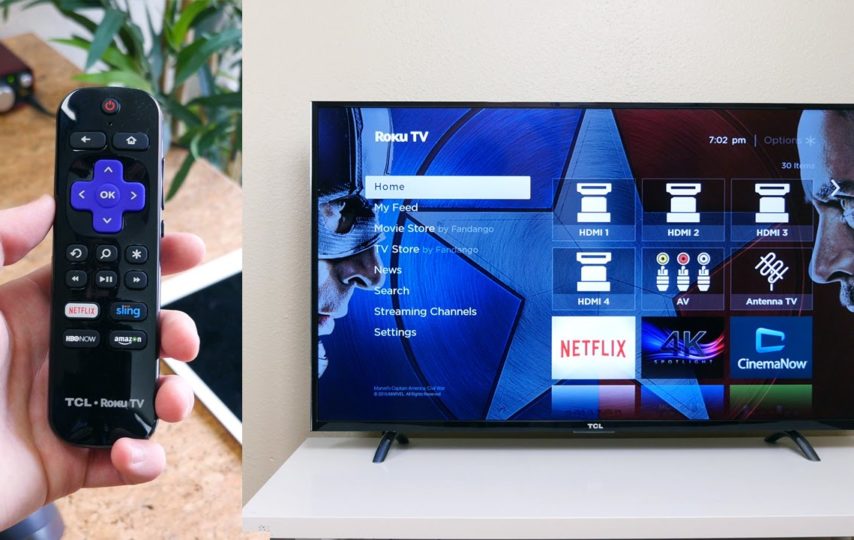With the time-progression, the technology is developing at super-fast speed. The desktops got replaced by laptops and old mobiles by high-tech smartphones. With development taking place in every aspect, the basic televisions of the past have also upgraded to LED and OLED’s. These modish-looking televisions are playing a vital role in modifying peoples’ lifestyles too. Thus, we find these relatively new devices gaining a massive positive response. However, this new television technology comes at an expensive price leading to one key question; how to save money when buying OLED or LED TV? Let’s find out the answer!
LED & OLED
Following its invention in the late 1800s, the television systems have been continuously evolving. Scientists & engineers are still working tirelessly to upgrade the present models, and bring forth something that pleases and satisfies the eyes like none other.
In this strenuous struggle, the masterminds have introduced some very advanced and awe-inspiring screen technologies, including LED and OLED. These technologies offer explicit 4K images and ultra-slim designs. However, in terms of picture quality, both of them are largely different from one another.
Historically, in true means, the first-ever flat-panel LED TV developed in 1977. Even so, it wasn’t until somewhere near 2012-2014 that the LED TV’s caused the LCD TV’s to fade into the oblivion.
The reason LED TV’s became popular amongst masses, is the fact that they deliver a brighter picture, whether one switches the lights on or off. Thus, giving an impression of better and vivid details. Practically, an LED TVs uses LCD panel and display technology, minus the Cold Cathode Fluorescent Lamps (CCFL). Instead, it becomes illuminated with tiny light-emitting diodes, which do not produce heat due to the absence of filament. There are four different types of LED backlights, with the fourth being most popular these days. These include:
- Edge-lit
- Back-lit
- Full-array lit
- Quantum dots
Once LED technology had its chance, people turned to OLED, which came around 2013. A short for Organic Light Emitting Diode, this technology uses an organic substance to illuminate the screen with the flow of electric current. With fewer layers than an LCD, it has a simple construction without a backlight. Hence, every pixel forms a light source of its own and is capable of switching off completely.
Ways to Save Money
Once in the TV store, purchasing the cheapest LED or OLED is certainly not the wisest thing to do. If you plan to save money when buying LED or OLED, then it is better to consider a few features and apply some tactics. So, you purchase one suitable TV that lasts longer and fulfills your needs better.
- Screen Size & Resolution
The screen size is one of the most important features that you decide upon regardless of the type. You will determine the suitable screen size based on your family size, TV’s placement, and your budget. First, decide whether your family watches TV together or individually. If you notice more people watching TV at once, then it is wiser to opt for a larger screen. Usually, a screen size of 55-65” is an ideal choice for both LED and OLED.
Screen resolution refers to the display quality of a TV. Generally, you will find around three options for screen resolution, including full HD, 4K, and 8K. While full HD 1080p gets considered a standard today, more and more people are choosing 4K. The 4K screen resolution offers four times more refined picture quality of about 2160p. You can view even the minute details with significant clarity and sharpness. Also, you can sit closer to a 4K TV rather than a standard HD TV. As for the 8K resolution, you are less likely to find a variety of models. Until now, even the most established brands are still planning to release an 8K model. TCL has recently announced the launch of an 8K TCL Smart TV model soon. Even if you find a suitable 8K model, then still it will be a wastage of money as much of the movies and shows are not 8K compatible.
- HDMI & Connectivity
When purchasing an LED or OLED TV, most of us are so occupied deciding, which of the two will provide a better visual experience at minimal cost that we often overlook an important aspect of the television; HDMI ports & Connectivity.
Regardless of screen technology, almost every other Smart TV offers internet connectivity. However, we tend to forget that connectivity of this sort happens to be of little value if there are a limited number of HDMI ports. To make the most of your money, and save the extra costs that may arise later, it is preferable to buy an LED or OLED TV with at least four HDMI ports. It will enable you to connect your streaming devices, gaming consoles, soundbar, and any other device that you wish to connect, at a time.
- Costly Warranties
With some of the models being the not so preferred ones, manufacturers try to lure in the customers using long and costly warranties. The long warranty might appear an alluring element. But you will find these models to be extra expensive. Thus, it is wiser to spend your money on LED and OLED models with suitable features rather than long warranties.
- Do your Homework
Another effective method of saving your money when buying an LED or OLED TV is doing complete research before heading to the TV-shopping spree. List down your preferred set of features in your future TV and search up the internet for one that is close to your dream TV model and also falls into your budget. At times, different brands offer the same set of features in certain models, but with contrasting price tags. Furthermore, you can benefit from bargain websites as they offer some of the best deals & coupons.
- Go For Last Year’s Model
An efficient way is to opt for the last year’s model regardless of LED or OLED. The model will be slightly older, but the price would be lesser than the recent model. Also, it is a good time for a bargain. However, you might have to compromise a little on the features. Another way is to approach the TV store in sales. The discounts not only lowers the price but helps in finding the most suitable TV.








